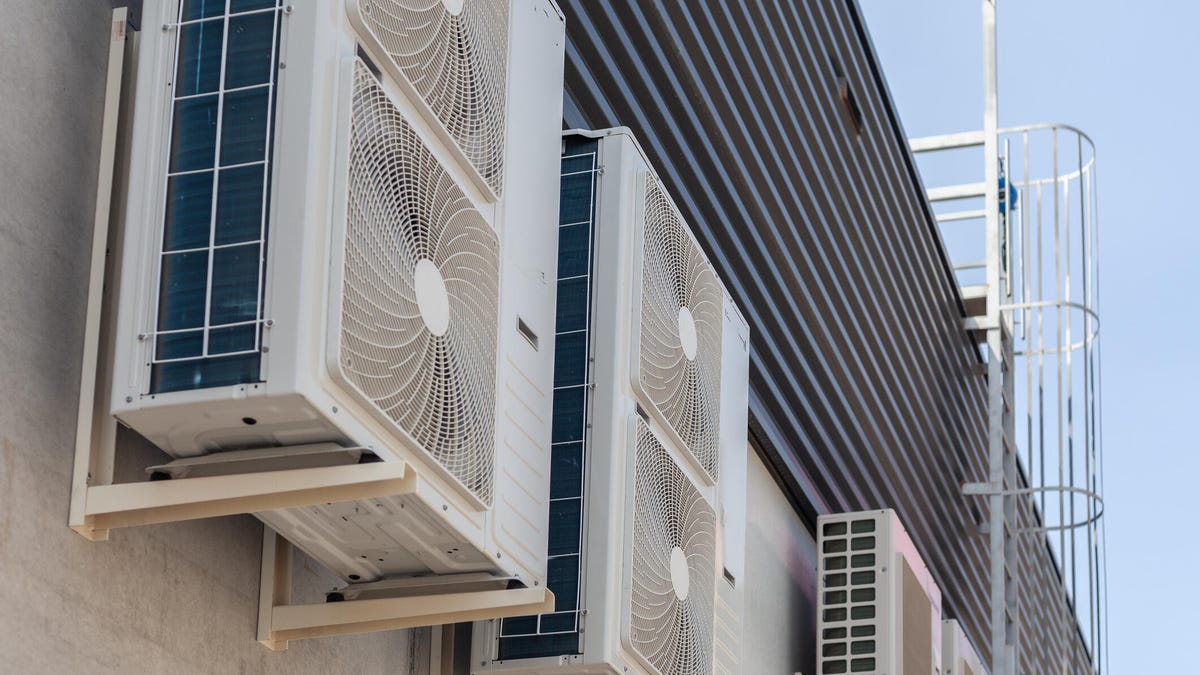Commercial Rooftops Are the Next Frontier for Energy Efficient Heat Pumps
Commercial Rooftops Are the Next Frontier for Energy Efficient Heat Pumps CNET


Commercial Building Heat Pump Accelerator Program

Think your energy bills are high when winter is at its coldest or summer is at its hottest? The next time you’re walking through a big-box store, imagine how much it costs to maintain a comfortable temperature under those high ceilings.
The commercial sector accounted for about 18% of the total energy consumed in the US in 2022, and by far the single largest energy use for commercial buildings is in space heating, at 32%, according to data from the US Energy Information Administration.
The Department of Energy (DOE) has launched the Commercial Building Heat Pump Accelerator program, which aims to develop technologies that can heat large buildings more efficiently, such as heat pumps. This program challenges manufacturers to build better rooftop heat pumps that can replace the less-efficient heating and cooling technology currently used in commercial buildings. By improving heating efficiency, the program aims to reduce energy consumption and fossil fuel emissions.
The commercial heat pump initiative aligns with the Sustainable Development Goals (SDGs) by promoting clean technologies and reducing carbon emissions. Energy Secretary Jennifer Granholm stated that this program builds on previous efforts to bring clean technologies from the lab to the market, contributing to the overall reduction of harmful carbon emissions in the economy.
Why Heat Pumps Matter
Heat pumps have gained popularity in residential settings due to their cost-saving benefits and versatility. They outsold gas furnaces last year, as they can function as both a furnace and an air conditioner.
The technology behind heat pumps is relatively simple. They transfer heat by cycling a pumped refrigerant between the home and the outside environment. This can be the air outside for air-source heat pumps or the warm underground for geothermal heat pumps. Heat pumps use electricity as their power source, making them more environmentally friendly when powered by renewable energy sources such as solar panels.
Heat pumps offer energy and cost savings compared to electric furnaces or older air conditioner models. They are more efficient and use less energy overall, contributing to reduced fossil fuel emissions.
Saving Energy and Money
Heating buildings consumes a significant amount of energy, resulting in high costs. By transitioning to more efficient heat pump technology, fossil fuel emissions could be cut in half compared to natural gas-powered technology, according to the DOE. Additionally, American businesses could save $5 billion annually on utility bills through the adoption of improved heat pump systems.
Individual businesses stand to benefit greatly from these savings, as energy costs for commercial buildings are typically much higher than those for residential properties. Research conducted by the National Renewable Energy Laboratory indicates that switching to air-source heat pumps could reduce home energy consumption by 31% to 47% on average and emissions by 36% to 64%.
SDGs, Targets, and Indicators
-
SDG 7: Affordable and Clean Energy
- Target 7.2: Increase the share of renewable energy in the global energy mix
- Indicator 7.2.1: Renewable energy share in the total final energy consumption
-
SDG 9: Industry, Innovation, and Infrastructure
- Target 9.4: Upgrade infrastructure and retrofit industries to make them sustainable
- Indicator 9.4.1: CO2 emissions per unit of value added
-
SDG 11: Sustainable Cities and Communities
- Target 11.6: Reduce the environmental impact of cities, including air quality
- Indicator 11.6.2: Annual mean levels of fine particulate matter (e.g., PM2.5) in cities
-
SDG 13: Climate Action
- Target 13.2: Integrate climate change measures into national policies, strategies, and planning
- Indicator 13.2.1: Number of countries that have integrated mitigation, adaptation, impact reduction, and early warning measures into national policies, strategies, and planning
Analysis:
1. Which SDGs are addressed or connected to the issues highlighted in the article?
The issues highlighted in the article are connected to SDG 7 (Affordable and Clean Energy), SDG 9 (Industry, Innovation, and Infrastructure), SDG 11 (Sustainable Cities and Communities), and SDG 13 (Climate Action).
2. What specific targets under those SDGs can be identified based on the article’s content?
Based on the article’s content, the specific targets that can be identified are:
– Target 7.2: Increase the share of renewable energy in the global energy mix.
– Target 9.4: Upgrade infrastructure and retrofit industries to make them sustainable.
– Target 11.6: Reduce the environmental impact of cities, including air quality.
– Target 13.2: Integrate climate change measures into national policies, strategies, and planning.
3. Are there any indicators mentioned or implied in the article that can be used to measure progress towards the identified targets?
Yes, there are indicators mentioned or implied in the article that can be used to measure progress towards the identified targets. These indicators are:
– Indicator 7.2.1: Renewable energy share in the total final energy consumption.
– Indicator 9.4.1: CO2 emissions per unit of value added.
– Indicator 11.6.2: Annual mean levels of fine particulate matter (e.g., PM2.5) in cities.
– Indicator 13.2.1: Number of countries that have integrated mitigation, adaptation, impact reduction, and early warning measures into national policies, strategies, and planning.
SDGs, Targets, and Indicators:
| SDGs | Targets | Indicators |
|---|---|---|
| SDG 7: Affordable and Clean Energy | Target 7.2: Increase the share of renewable energy in the global energy mix | Indicator 7.2.1: Renewable energy share in the total final energy consumption |
| SDG 9: Industry, Innovation, and Infrastructure | Target 9.4: Upgrade infrastructure and retrofit industries to make them sustainable | Indicator 9.4.1: CO2 emissions per unit of value added |
| SDG 11: Sustainable Cities and Communities | Target 11.6: Reduce the environmental impact of cities, including air quality | Indicator 11.6.2: Annual mean levels of fine particulate matter (e.g., PM2.5) in cities |
| SDG 13: Climate Action | Target 13.2: Integrate climate change measures into national policies, strategies, and planning | Indicator 13.2.1: Number of countries that have integrated mitigation, adaptation, impact reduction, and early warning measures into national policies, strategies, and planning |
Behold! This splendid article springs forth from the wellspring of knowledge, shaped by a wondrous proprietary AI technology that delved into a vast ocean of data, illuminating the path towards the Sustainable Development Goals. Remember that all rights are reserved by SDG Investors LLC, empowering us to champion progress together.
Source: cnet.com

Join us, as fellow seekers of change, on a transformative journey at https://sdgtalks.ai/welcome, where you can become a member and actively contribute to shaping a brighter future.







